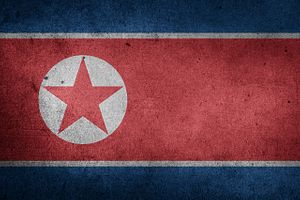North Korea fired a long-range ballistic missile toward its east coast on Thursday, according to the South Korean Joint Chiefs of Staff (JCS). The missile launch came 17 days after the North fired two short-range ballistic missiles to respond to the Ssangyong exercise, a South Korea-U.S. joint amphibious landing drill that was held on a larger scale.
The tested missile flew about 1,000 km with a maximum altitude of about 3,000 km and was launched around 7:23 a.m. KST from the outskirts of Pyongyang, the capital of the North, according to the South’s JCS. Based on the initial analysis of the missile, the JCS said the tested missile could be a new solid-fuel intercontinental ballistic missile (ICBM) – which was unveiled for the first time during the military parade held on February 15. Whether or not this was the first launch of its solid-fuel ICBM will be revealed by the North’s state media report on Friday, if it follows the usual pattern of releasing information.
South Korean and U.S. intelligence authorities are analyzing more details of the missile.
Cho Tae-yong, South Korea’s national security adviser, held an emergency National Security Council meeting hours after the North’s suspected ICBM launch. During the meeting, the attendees, including the foreign and unification ministers, strongly condemned the launch and said the recent series of North Korean provocations reflect the necessity of maintaining the strengthened alliance with the United States. With this, they also agreed to enhance trilateral cooperation with the U.S. and Japan so as to collect valuable information on the North’s nuclear facilities and future provocations in a timely manner.
South Korea’s JCS again denounced the North’s missile launch and demanded that Pyongyang immediately halt the missile tests, which are clear violations of United Nations Security Council resolutions.
According to Japanese media, Tokyo first issued an emergency warning to the residents of Hokkaido island, located in the northern part of Japan, to take shelter due to its initial intelligence suggesting the missile may fall near the island. However, minutes later the Japanese authorities altered the assessment to say the missile had “no possibility of landing in Hokkaido.” Japan’s defense minister confirmed that the North Korea missile seemed to have fallen outside of its Exclusive Economic Zone (EEZ).
The missile launch was carried out two days before one of the North’s biggest holidays, the birth anniversary of Kim Il Sung, the founder of the country and the grandfather of current leader Kim Jong Un. The launch was also made two weeks before South Korea President Yoon Suk-yeol will make a state visit to Washington.
North Korea has not been answering the inter-Korean daily opening and closing calls through hot channels since April 7. The South Korean Unification Minister published a statement, the first of its kind in the past 10 years, condemning North Korea’s malicious intention to ghost calls with the South and its illicit operation at the Kaesong Industrial Complex, an inter-Korean manufacturing complex that has been shut down since February 2016 in the wake of the North’s nuclear and missile tests.
Pyongyang appears to have reached the conclusion that it does not need to negotiate with the Yoon administration but will focus on increasing its leverage for future nuclear talks with Washington.
Three days before the launch, North Korean state media reported that the 6th enlarged meeting of the 8th Central Military Commission of the Workers’ Party of Korea (WPK) was held. During the meeting, Kim Jong Un and his military commanders may have discussed how to effectively neutralize key military bases in South Korea, considering the images that appeared behind them in the report.
Last year, North Korea set a new record for the number of ballistic missiles it launched in a year. The pace has been slower this year; Thursday’s launch was the North’s ninth ballistic missile launch of 2023. However, North Korea has shown a strong willingness to keep showing off its growing missile capabilities by launching new types of missiles.
According to North Korean state media, it tested a new underwater nuclear attack system and conducted a nuclear counterattack simulation last month. Pyongyang also tested an ICBM and cruise missiles in a response to the South Korea-U.S. joint military drills.
Considering the type and number of the North’s missile tests, Pyongyang seems to have decided on a different approach this year, as it needs to devote more resources to grapple with its sluggish economy, especially its food shortage issue. In light of the external security conflicts involving Russia’s invasion of Ukraine and the intensified rivalry between the United States and China, North Korea will unlikely halt its ballistic missile tests, as the necessity of building up more powerful nuclear weapon programs has been growing in Pyongyang’s view.

































